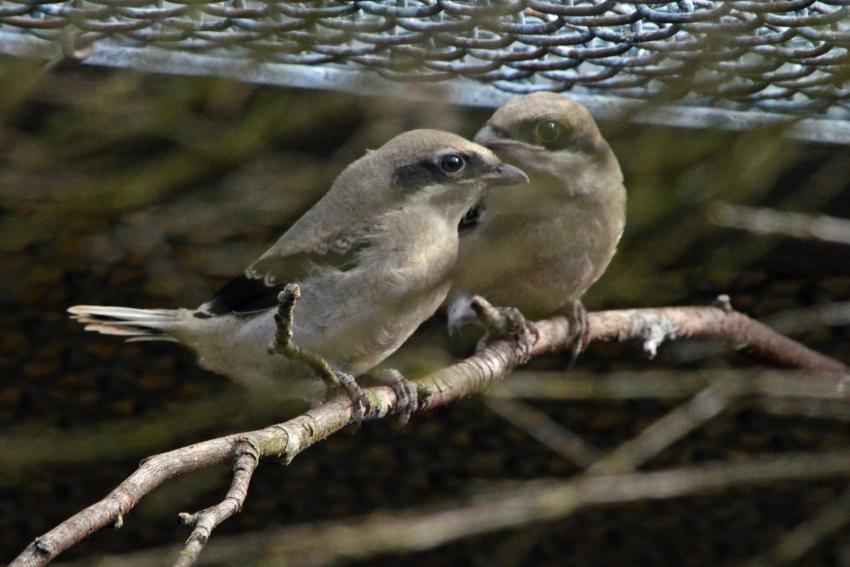
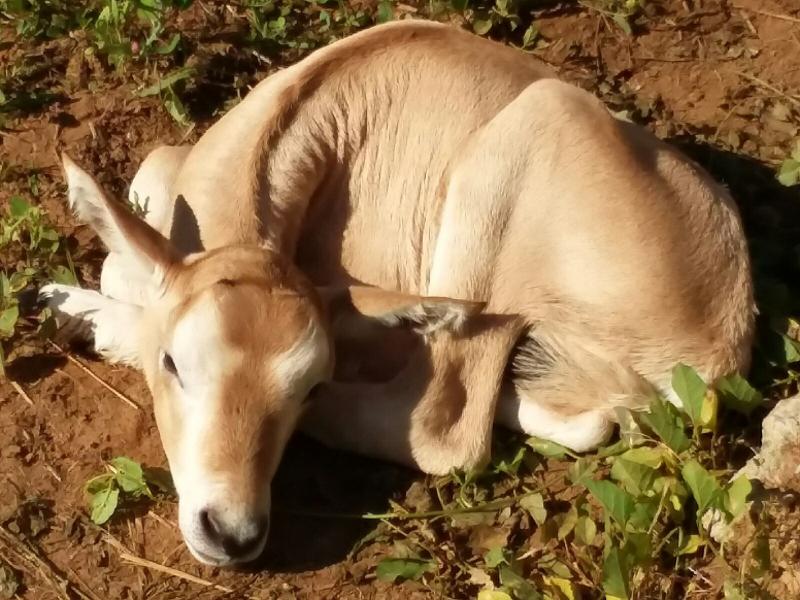
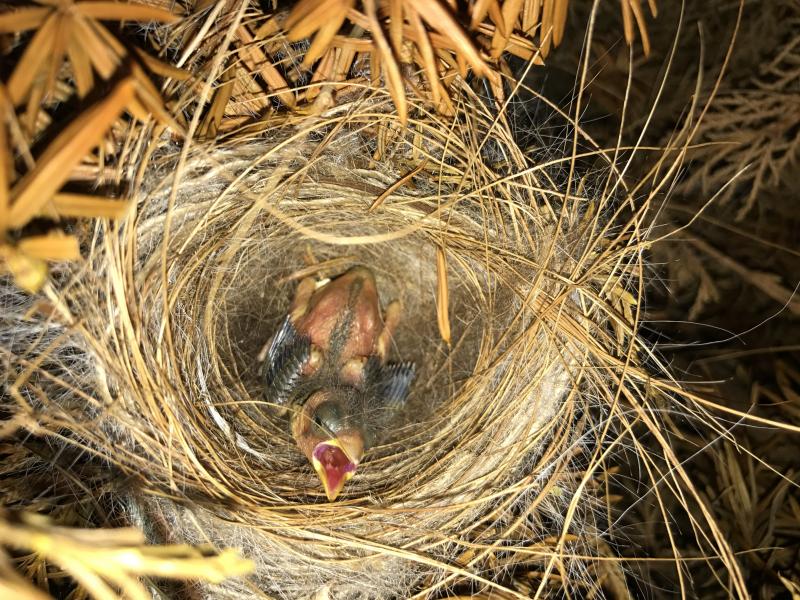
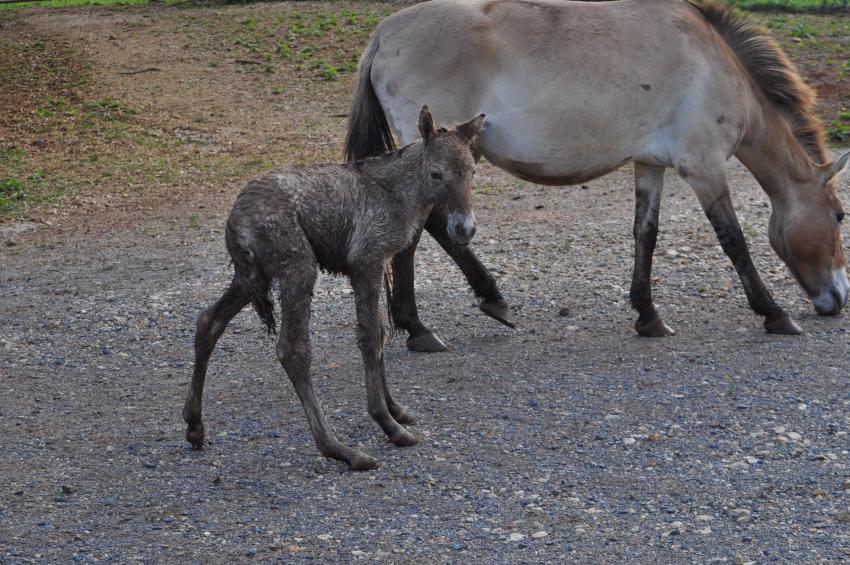
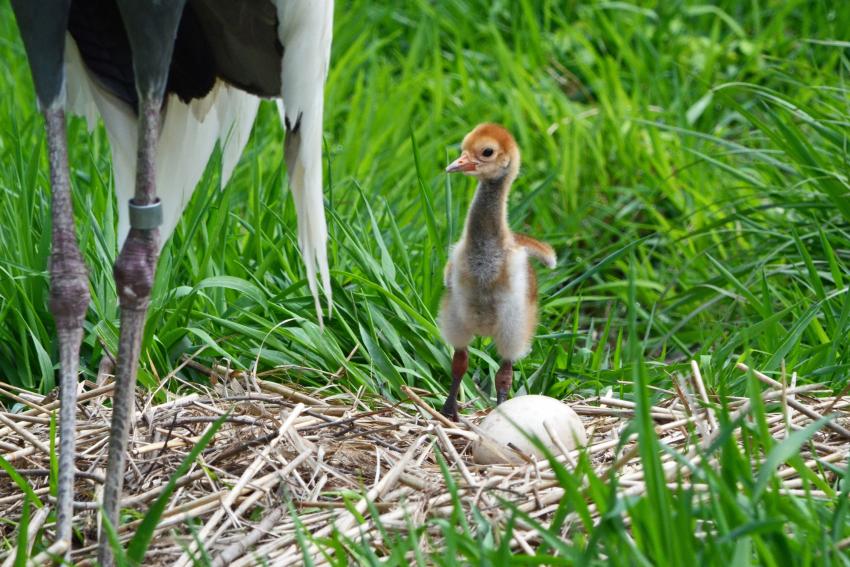
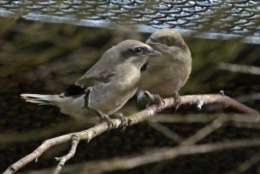
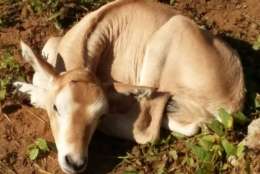
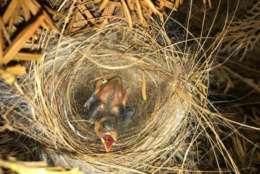
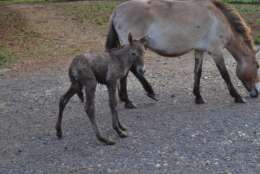
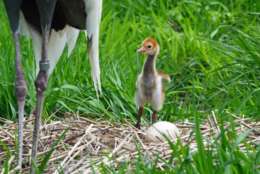
WASHINGTON — Friday is Endangered Species Day, and the Smithsonian Conservation Biology Institute has plenty of reasons to be festive this year.
SCBI is celebrating several recent new births of both endangered and vulnerable species. And while some are sticking around the Front Royal, Virginia, facility, others will be introduced into the wild later this year.
“The Smithsonian Conservation Biology Institute is a very busy place at the moment, but it’s a very exciting place,” said SCBI’s Devin Murphy.
“Our scientists and animal care teams are working hard to make sure that many of the species that live there never disappear from the planet, so every birth is a conservation success.”
The zoological baby boom began April 4, when two loggerhead shrike chicks hatched. Also known as “butcher birds” (for impaling their prey on thorns and barbed wire), the species was once common in North America, according to SCBI, but has fallen by as much as 70 percent.
Roughly a week later, SCBI welcomed the arrival of a newborn red siskin, a songbird native to South America that is one of the world’s most endangered birds. The chick and two others (which did not survive) were the first to hatch since the species arrived in 2015 at SCBI. The institute is working with Venezuela and Smithsonian’s National Museum of Natural History to build a population that can be introduced into the wild.
“It’s a big accomplishment,” said Murphy. “It’s a first step to building a population that could be reintroduced to the wild, and we hope to have more in the future.”
The 43rd white-naped crane chick to hatch at SCBI arrived weeks later on April 26. Its parents are one of the only white-naped crane pairs living at the research facility that are capable of breeding naturally. The International Union for Conservation of Nature considers the species to be vulnerable, as there are an estimated 5,000 living in the wild.
And on May 2, seven black-footed ferret kits were born. Currently blind, they will open their eyes when they’re 35 weeks old and should be living independently by the autumn. Black-footed ferrets born at SCBI are introduced into the wild each year.
Two days later on May 4, two maned wolf pups were born. They’re doing well, as are their parents, Layla and Santiago. The pups will get a thorough examination when they turn 6 weeks old. Threatened by habitat loss, the IUCN lists the species as vulnerable as well.
A Przewalski’s horse foal arrived at SCBI on May 9. Along with its mother, Maja, the foal is living separately from the herd and doing well. Przewalski’s are the last wild species of horse, and were once extinct in the wild. They first came to the facility in 1983; horses that have been introduced into the wild in China and Mongolia are currently being followed with satellite tracking collars.
And on May 15, SCBI welcomed a scimitar-horned oryx calf. Both the calf and the mother are doing fine, and a neonatal exam will be performed soon. The oryx had been extinct in the wild until last year, when an international reintroduction project began. With the use of satellite collars, SCBI is following 37 that have been reintroduced in the grasslands of Chad, and there are plans to reintroduce two more groups this summer.
Read more about the institute’s animal programs on the SCBI site.








